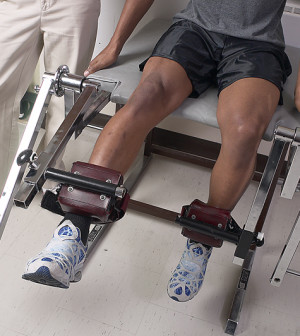- Skip Storing This Everyday Product in the Fridge Door
- Green Tea + B3 Pairing May Boost Brain Health
- Navigating Your Midlife Crisis: Embracing New Possibilities
- City Raccoons Showing Signs of Domestication
- Mapping the Exposome: Science Broadens Focus to Environmental Disease Triggers
- One Week Less on Social Media Linked to Better Mental Health
- Your Brain Changes in Stages as You Age, Study Finds
- Some Suicide Victims Show No Typical Warning Signs, Study Finds
- ByHeart Formula Faces Lawsuits After Babies Sickened With Botulism
- Switch to Vegan Diet Could Cut Your Greenhouse Gas Emissions in Half
Acne Yields Up Secret That Points to New Treatments

In a finding that could lead to new treatments for acne, scientists say they’ve discovered a previously unrecognized way in which bacteria trigger inflammation in the skin.
The skin is the body’s first line of defense against invading germs. But it’s also constantly awash in bacteria of all kinds — and usually puts up no fight.
“It’s a big puzzle as to why we tolerate all these bacteria on our skin,” said lead researcher Dr. Richard Gallo, interim chair of dermatology at the University of California, San Diego.
“Usually, we walk around at peace with them,” Gallo pointed out. “But at certain times, that detente breaks down and you get an infection.”
In its study, Gallo’s team focused on the Propionibacterium acnes bacteria. As the name suggests, the bacteria can contribute to acne — as well as certain other infections.
Usually, P. acnes lives on the skin harmlessly. But when the bacteria are caught in certain circumstances — in a clogged pore, surrounded by oil and no air — they can cause the inflammatory response known as acne.
Gallo’s team said it found clues as to why.
In lab experiments, the researchers found that under certain conditions, P. acnes will secrete fatty acids that inhibit two enzymes in keratinocytes — cells that make up most of the skin’s outermost layer. That, in turn, boosts the cells’ inflammatory reactions.
“Basically,” Gallo said, “we’ve discovered a new way that bacteria trigger inflammation.”
The findings, according to Gallo, may help explain the process underlying acne and folliculitis — an inflammation of a hair follicle that causes pimple-like bumps or other skin symptoms.
The study was published online Oct. 28 in the journal Science Immunology.
Dr. Adam Friedman is an associate professor of dermatology at George Washington University School of Medicine and Health Sciences in Washington, D.C. He said any time scientists better understand the “why,” it can trigger the development of new treatments.
Friedman, who was not involved in the new study, said the findings “open many doors” for future research.
There are already a number of treatments for acne that do work somewhere along the pathway described in this study, Friedman said. They may target excess oil in the pores, the bacteria itself, or the skin’s inflammatory response.
But there haven’t been any truly new approaches to the acne battle for a while, according to Friedman. “The more medications we have to choose from, the better,” he said.
On a broader level, Friedman said, this study illustrates how the human body’s resident bacteria are not just along for the ride.
“P. acnes is not just a bystander,” he pointed out. “This one organism can actually change how our immune system works.”
“We’re basically a planet to all of these bacteria, and we tolerate them,” Friedman said. “Now we’re discovering more about how they can actually regulate us.”
More information
The American Academy of Dermatology has an overview on acne.
Source: HealthDay
Copyright © 2025 HealthDay. All rights reserved.










